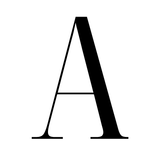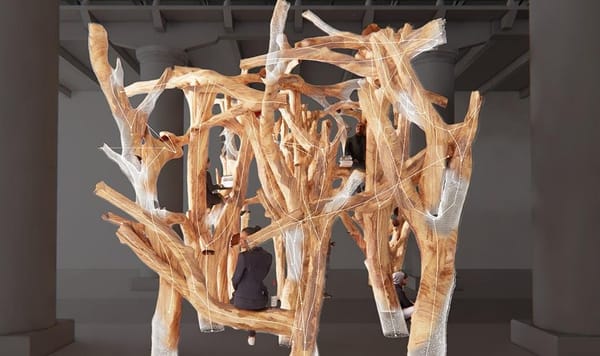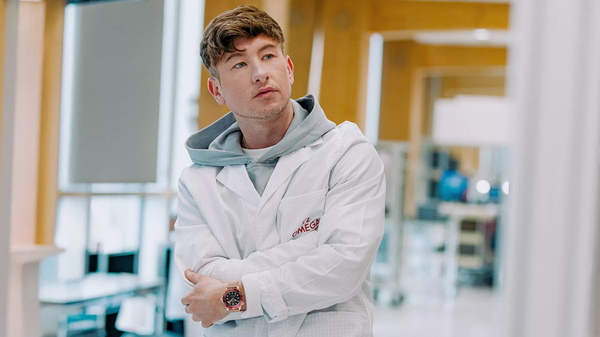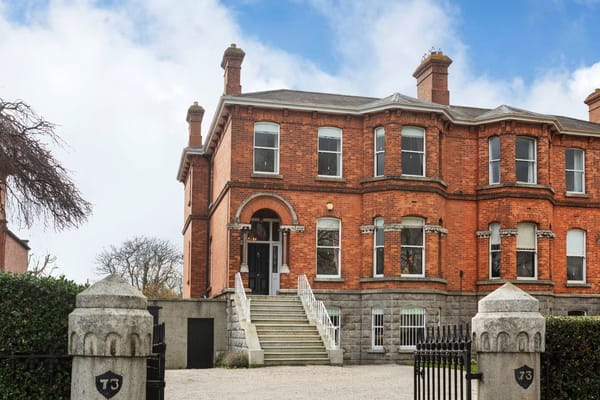All Flowers in Time Bend Towards the Sun at Dublin Castle
All Flowers in Time Bend Towards the Sun explores dualities in art and life, featuring Irish and international artists.
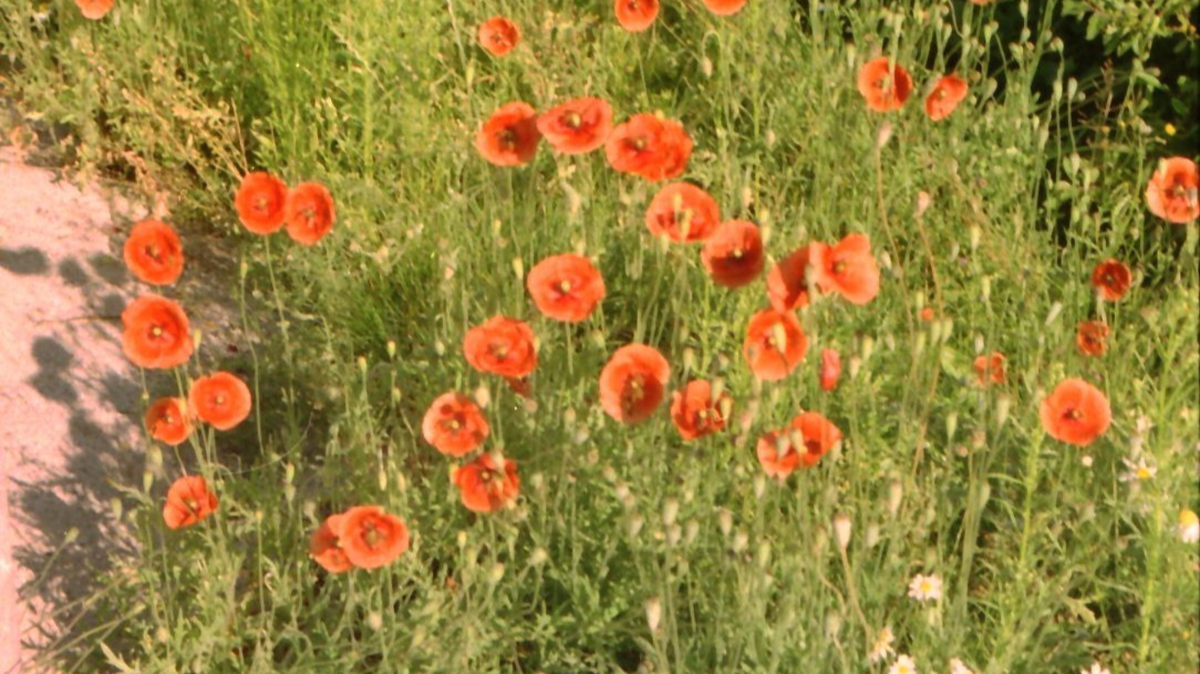
Dublin Castle’s Coach House Gallery is once again at the centre of a cultural celebration, as it plays host to the remarkable exhibition “All Flowers in Time Bend Towards the Sun”, running until 11 May 2025. This free-to-access exhibition delves deeply into the dualities that shape both art and life, inviting visitors to reflect on how opposing forces, both in the natural world and within human experience, often coexist, intersect, and give rise to greater meaning.
Curated by artists Paul Hallahan and Lee Welch, the exhibition features a carefully selected array of Irish and international artists working across diverse media, including painting, sculpture, and video. Inspired by the layered contrasts found in the works of Flann O’Brien, who famously explored the tensions between rural and urban, reality and imagination, and seriousness and humour, the exhibition is a celebration of how opposing elements, far from being mutually exclusive, can form the basis of profound creative expression.
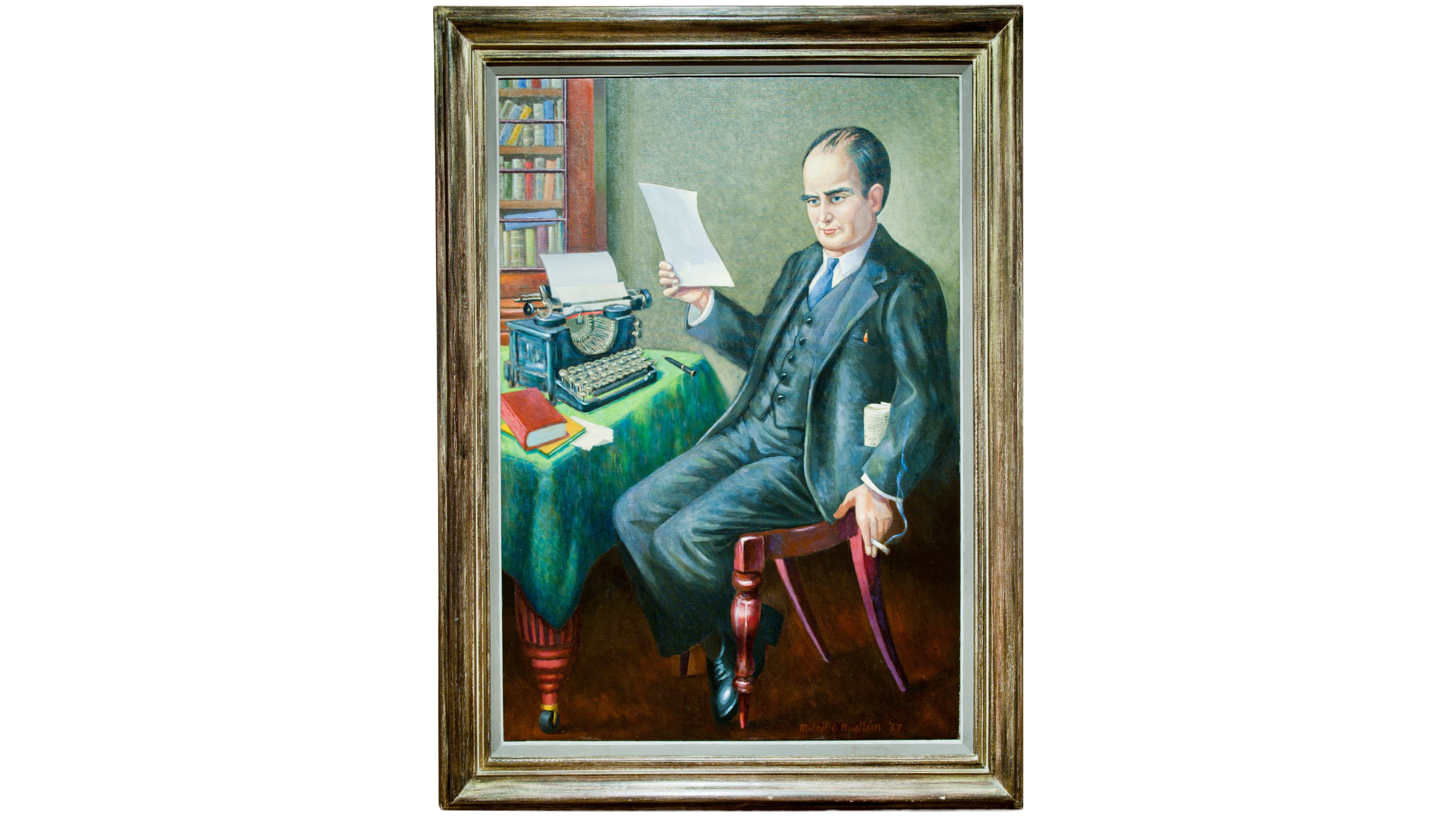
The exhibition’s title, “All Flowers in Time Bend Towards the Sun,” is drawn from an unreleased song by the late Jeff Buckley and Elizabeth Fraser. The title evokes a powerful metaphor for growth, transformation, and interconnectedness. Just as flowers bend towards the sun, the exhibition explores how dualities, whether they be oppositions between fragility and strength, tradition and modernity, or the personal and the universal, lean towards one another in search of balance and unity. This connection between opposing forces is not only central to the exhibition’s theme but also to the broader human experience.
Among the exhibition’s most exciting highlights is the rediscovery of a self-portrait by Christy Brown, the celebrated Irish artist, poet, and novelist. Long thought to be lost, this rare and intimate work offers an unparalleled glimpse into the personal world of one of Ireland’s most iconic cultural figures. The portrait provides a moving insight into Brown’s resilience and creativity, especially considering the artist’s extraordinary struggles with cerebral palsy. The unveiling of this piece is a reminder of the profound connection between art and the artist’s life, a perfect embodiment of the exhibition's exploration of dualities, where vulnerability and strength coexist.
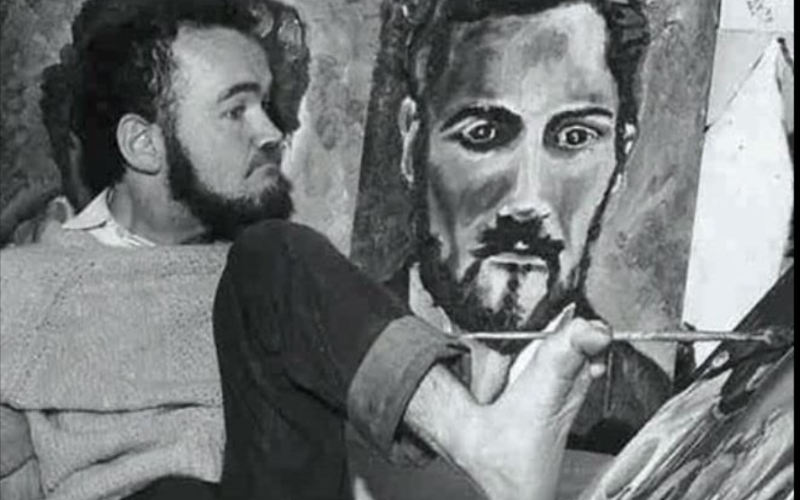
The exhibition showcases works by a variety of contemporary artists whose practices engage with the exhibition's central themes in unique and thought-provoking ways. William McKeown’s Hope Drawing (circa 2003) offers a meditative reflection on the fragility of hope. With its delicate watercolour hues, McKeown’s piece captures the balance between despair and optimism, inviting viewers to consider how these emotional states can exist side by side.
In stark contrast, Marcel Vidal’s Banana XIII (2022) presents a vibrant oil painting that pushes the boundaries between organic form and abstraction. Vidal’s dynamic use of colour and texture evokes both the ephemeral nature of life and the timelessness of artistic expression. His work invites the viewer to reflect on the transience of existence and the beauty that arises from its fleeting nature.
Aleana Egan’s Slow Channels (2017) further explores the tension between fragility and strength. Egan uses a variety of materials, including card, tape, and Jesmonite, to create sculptural pieces that evoke both solidity and precariousness. The work captures the sense of vulnerability that accompanies existence, suggesting that strength is often found in the most fragile moments.
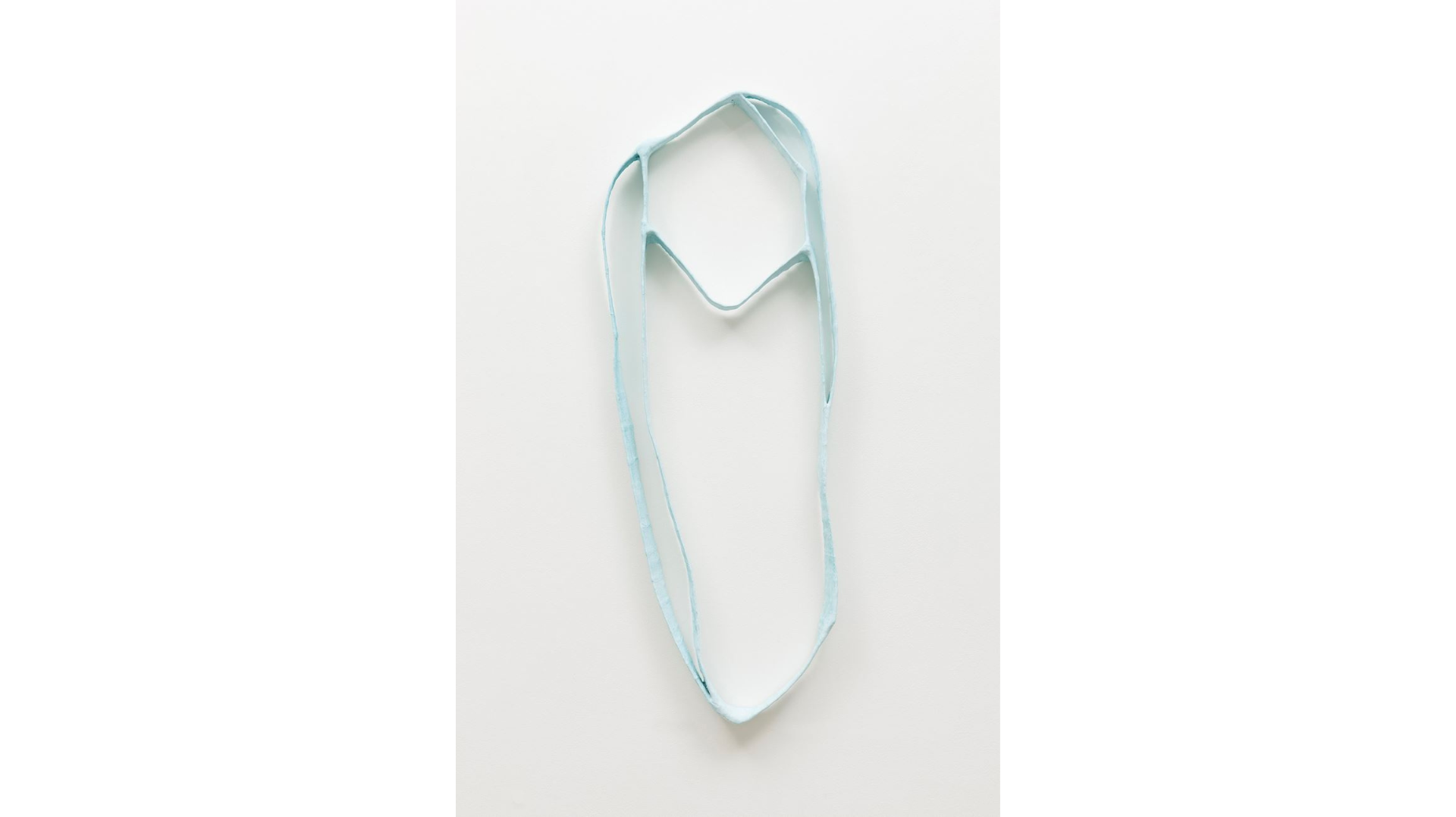
In addition to these standout works, the exhibition features contributions from a range of other artists who explore dualities in ways both subtle and bold. Nina Canell and Genieve Figgis blur the boundaries between the tangible and the imagined. Canell’s sculptures and Figgis’ paintings invite the viewer to reconsider the lines between reality and illusion, between what is seen and what is felt. Their works challenge the notion of fixed realities, suggesting that the world around us is more fluid and mutable than we might think.
The work of Eva Rothschild and Aleana Egan delves deeper into the relationship between solidity and fragility. Rothschild’s sculptural forms, with their geometric precision, exude strength and permanence, yet they also evoke a sense of unease and tension. Egan’s tactile works, on the other hand, convey vulnerability and fragility, reminding us that stability and instability are often two sides of the same coin.
Additionally, the exhibition includes works by Samir Mahmood and Mairead O’hEocha, who reflect on the complexities of identity, migration, and spirituality. Mahmood’s works blend cultural and religious symbols to explore the tensions between personal and collective identities, while O’hEocha’s reinterpretations of the natural world invite reflection on the relationship between the familiar and the foreign. Both artists offer a meditation on the intersections between the personal and the universal, demonstrating how these dualities shape the human experience.
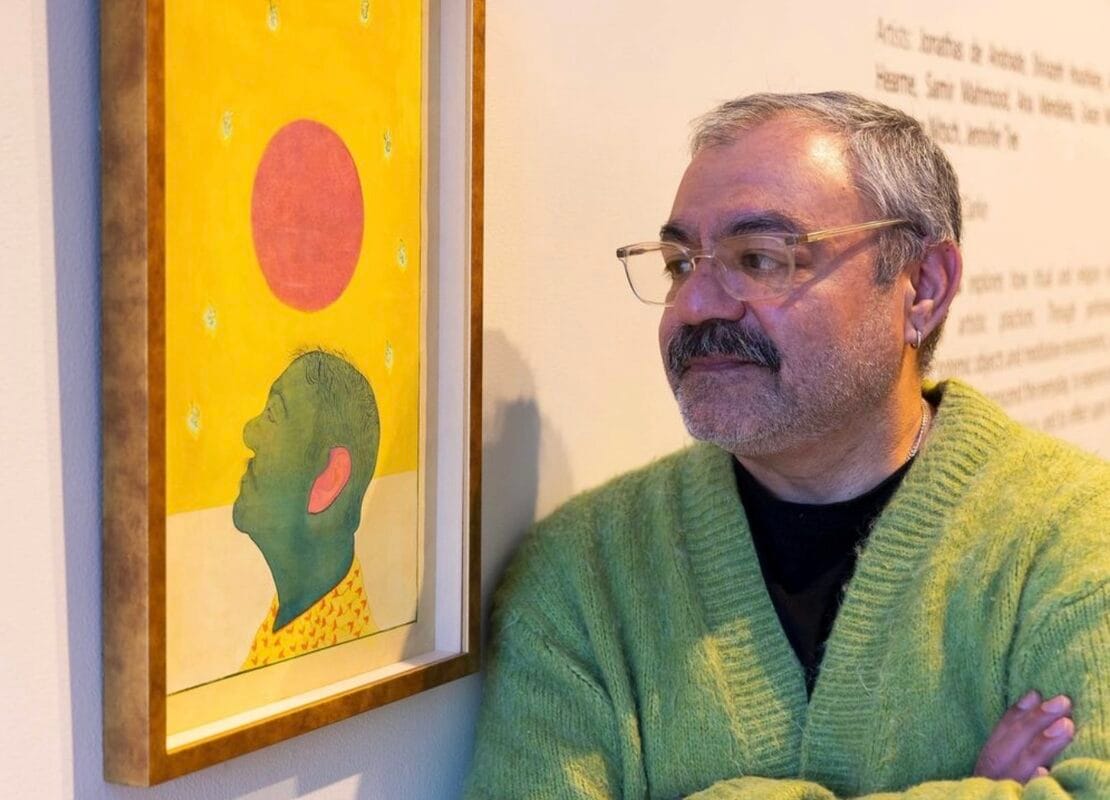
At its core, “All Flowers in Time Bend Towards the Sun” is not just an exhibition of artworks; it is an invitation to reconsider how oppositions in art and life can be understood not as conflicts but as forces that complement and strengthen each other. Just as the world around us is full of contradictions, love and loss, joy and sorrow, and strength and weakness, so too does this exhibition reveal the beauty and complexity that can arise from embracing the tension between these dualities.
This exhibition is a rare opportunity to witness how artists from different backgrounds and practices engage with the philosophical and aesthetic implications of duality. It speaks to the heart of what it means to live in a world that is both chaotic and harmonious, where beauty can be found in the spaces between opposites.
The All Flowers in Time Bend Towards the Sun exhibition is free of charge and open to the public daily from 10:00 am to 5:00 pm, with a brief lunch break from 13:15 to 13:45. Whether you are a seasoned art lover or someone simply seeking a moment of reflection, this exhibition offers a unique and enriching experience that will stay with you long after you leave the gallery.
Located at Dublin Castle, one of Ireland’s most iconic cultural landmarks, the exhibition is the perfect opportunity to engage with art that challenges, inspires, and encourages reflection on the complexities of life. Running until 11 May 2025, it is a must-visit for anyone looking to explore the delicate dance between dualities and discover how beauty can be found in the tension between them.

